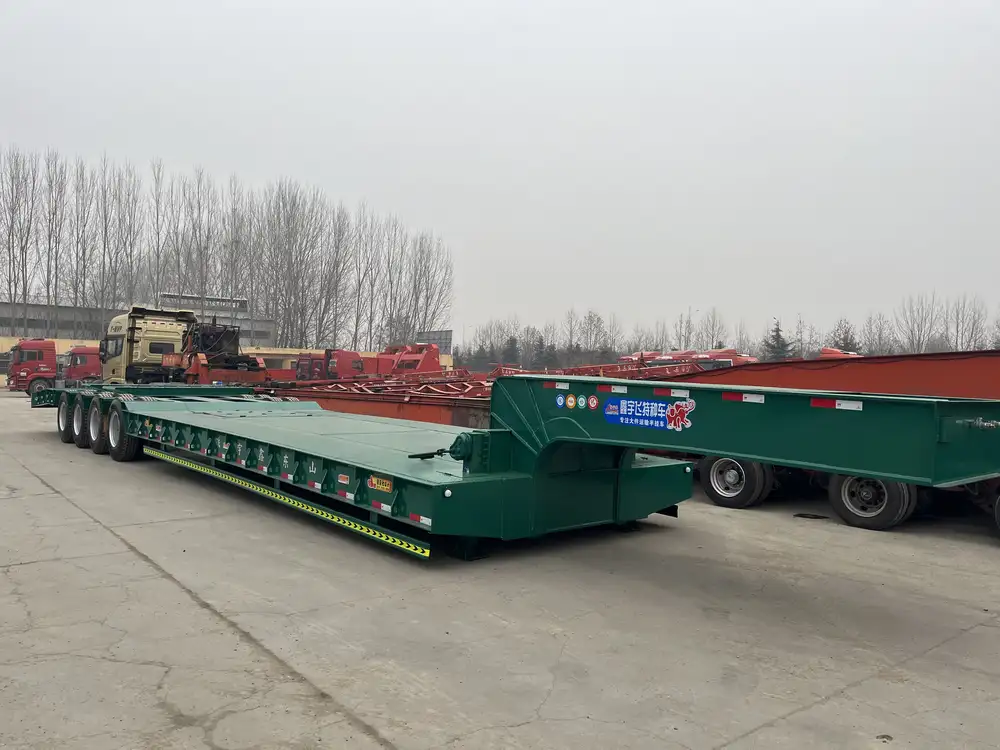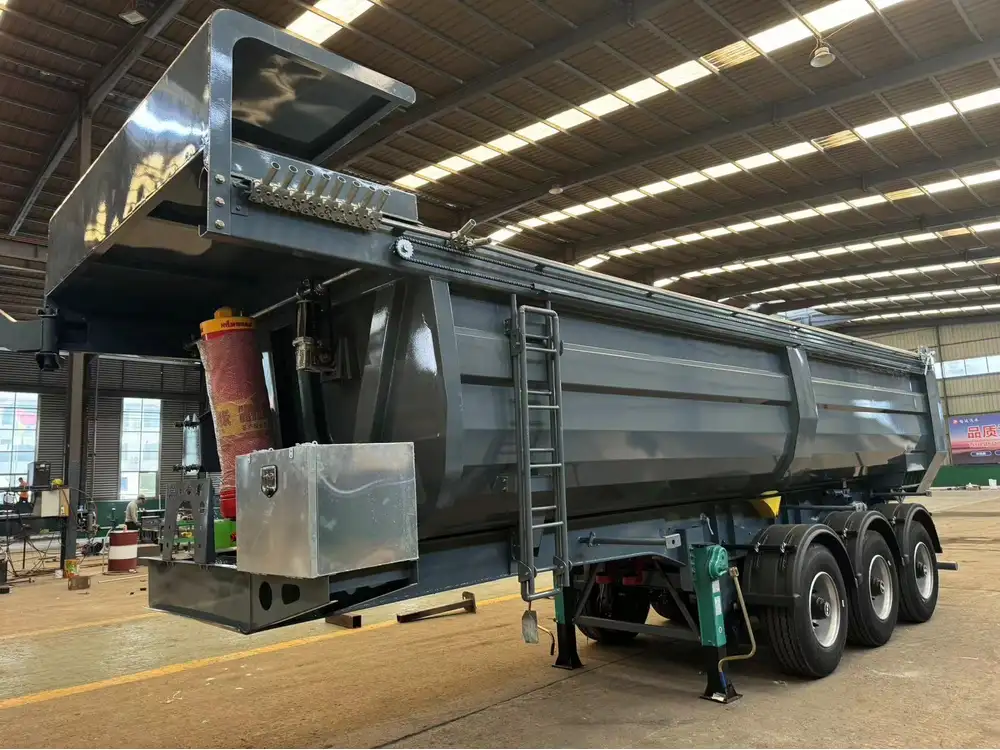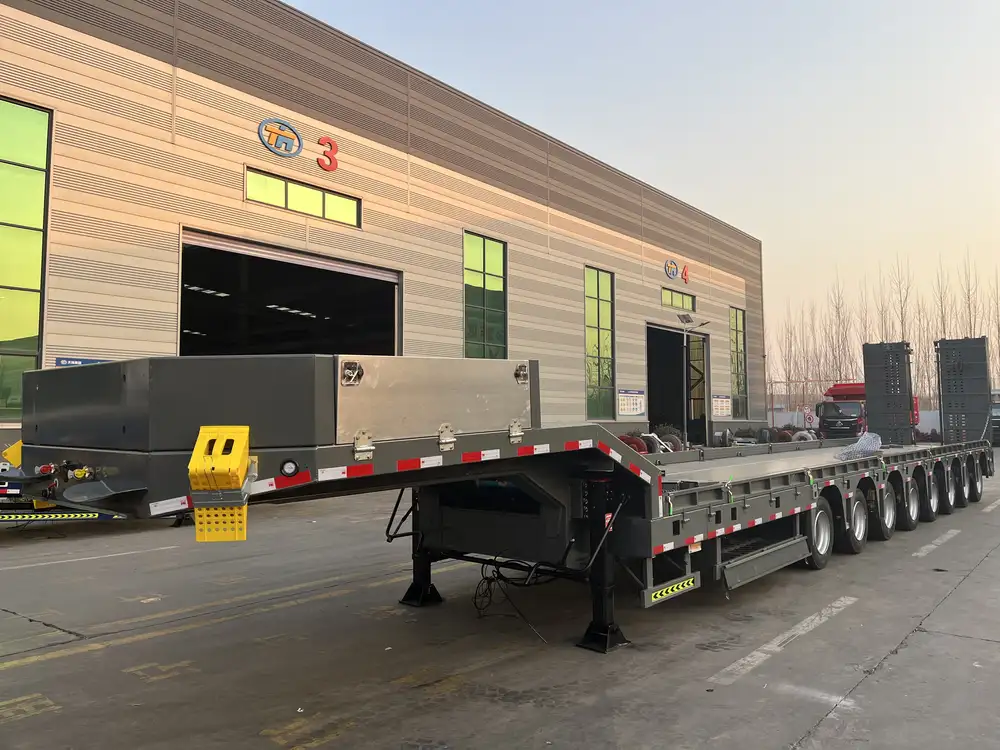When it comes to the logistics and transportation industry, understanding the dimensions of semi-trailers is crucial for optimizing routes, ensuring compliance with regulations, and maximizing cargo capacity. Among various technical parameters, one question frequently arises: How long is a trailer on a semi? This guide will delve into the specifics of semi-trailer lengths, variations, and implications for various stakeholders.
The Basics of Semi-Trailer Dimensions
Standard Lengths of Semi-Trailers
Semi-trailers vary in length based on their design and function. Here are some of the most common types:
| Trailer Type | Standard Length (feet) | Characteristics |
|---|---|---|
| Dry Van Trailer | 28 to 53 | Enclosed space for general cargo. |
| Reefer Trailer | 28 to 53 | Insulated and temperature-controlled for perishables. |
| Flatbed Trailer | 48 to 53 | Open-top design allowing for easy loading of heavy items. |
| Lowboy Trailer | 30 to 50 | Designed to transport heavy machinery with low ground clearance. |
| Tanker Trailer | 40 to 53 | Cylindrical design for liquid cargo transport. |
The most commonly used length for semi-trailers in the United States is 53 feet, a standard adopted for Maximum Freight Efficiency in the Freight Transportation Industry.

Federal Regulations on Trailer Lengths
Understanding the legal framework governing trailer lengths is essential for compliance. In the U.S.:
- Interstate Highway System: Vehicles are limited to a 53-foot trailer length for freight.
- State Regulations: Some states have unique guidelines allowing longer trailers, often up to 59 feet for specific equipment or transport needs.
Consideration of Overall Vehicle Length
The overall length of a semi-truck, including the tractor and the trailer, can range from 65 to 75 feet depending on the combination. However, it’s not just about the trailer. Logistics companies must consider the total length when planning routes, particularly in areas with specific length restrictions.
Types of Trailers and Their Applications

Dry Van Trailers: Versatility in Cargo Transport
The dry van trailer is highly versatile and can carry a variety of goods, predominantly dry loads. Typically measuring 53 feet, it provides ample space while remaining compliant with federal limits.
- Common Uses: Transporting electronics, clothing, and consumer goods.
- Advantages: Protects cargo from the elements and theft.
Reefer Trailers: Keeping Things Fresh
Reefer trailers, also fixed at standard lengths, offer temperature control for sensitive cargo. These trailers come in lengths of 28 feet to 53 feet.
- Common Uses: Perishable items like food products and pharmaceuticals.
- Advantages: Maintains a specified temperature range, providing safety for sensitive products.
Flatbed Trailers: The Heavy Lifters
Flatbed trailers are essential for transporting goods that do not fit neatly into an enclosed space. Their common lengths range from 48 to 53 feet.
- Common Uses: Building materials, machinery, and oversized loads.
- Advantages: Allows for easy loading and unloading from all sides.

Lowboy Trailers: Heavy Machinery Transport
Lowboy trailers are particularly useful for transporting heavy equipment, often measuring 30 to 50 feet.
- Common Uses: Construction and agricultural equipment.
- Advantages: Low center of gravity ensures stability for heavy loads.
Tanker Trailers: Fluid Management
A tanker trailer, critical for transporting liquids, varies in length from 40 to 53 feet.
- Common Uses: Gasoline, chemicals, and liquid food products.
- Advantages: Specifically designed to handle hazardous materials safely.
Factors Influencing Trailer Length Selection

Nature of Cargo
The type of cargo being transported heavily influences the choice of semi-trailer. Length and compatibility with cargo types are paramount. For example:
- Lightweight cargo may fit comfortably in a 28-foot dry van, minimizing transportation costs.
- Heavy machinery would require a flatbed or lowboy trailer ranging from 48 to 53 feet.
Route Constraints
Understanding and analyzing the route is vital to maintaining compliance and efficiency. Considerations include:
- State Regulations: Check for any specific restrictions on trailer length within the intended route.
- Urban Routes: In congested areas, shorter trailers may offer more flexibility and ease of navigation.
Weight Capacities
Each trailer type has specified weight capacities. For instance, a 53-foot flatbed might have a maximum payload capacity that varies based on the vehicle regulations and design specifications.

Fuel Efficiency
Suitable length not only impacts cargo efficiency but can also affect overall fuel consumption. Longer trailers generally have more air drag, potentially reducing fuel efficiency despite increased cargo capacity.
Additional Considerations
Compatibility with Tractors
When choosing a semi-trailer, it’s crucial to ensure compatibility with potential tractor units. The overall design and length of the tractor can affect turn radius, maneuverability, and safety. A longer combination may limit accessibility to certain areas.

Legal and Insurance Implications
Transportation companies must navigate insurance protocols, which could influence the choice of trailer based on length and type. Always consult with legal experts to understand the implications of operating oversized or specially designed trailers.
Technology Integration
Modern semi-trailers often incorporate technology to assist in monitoring and managing haulage operations. Considerations include:
- GPS for real-time tracking of trailer location.
- Load sensors for monitoring cargo weight and distribution.
Conclusion
The question, “How long is a trailer on a semi?” encompasses a myriad of considerations that go far beyond mere measurement. With lengths typically ranging from 28 to 53 feet, the choice of trailer is pivotal to operational efficiency, compliance with regulatory standards, and the safe transport of goods.

Key Takeaways:
- Types of Trailers: Understanding the different types of semi-trailers aids in selecting the right unit for specific cargo needs.
- Regulatory Compliance: Stay abreast of local and federal trailer length regulations to avoid legal complications.
- Operational Efficiency: Always analyze routes, cargo types, and weights before deciding on trailer length to maximize efficiency.
- Technology Use: Leverage modern technology to enhance transportation operations and ensure real-time monitoring.
By grasping these components, stakeholders in the transportation industry can make informed decisions that optimize logistics, streamline operations, and bolster overall performance.



